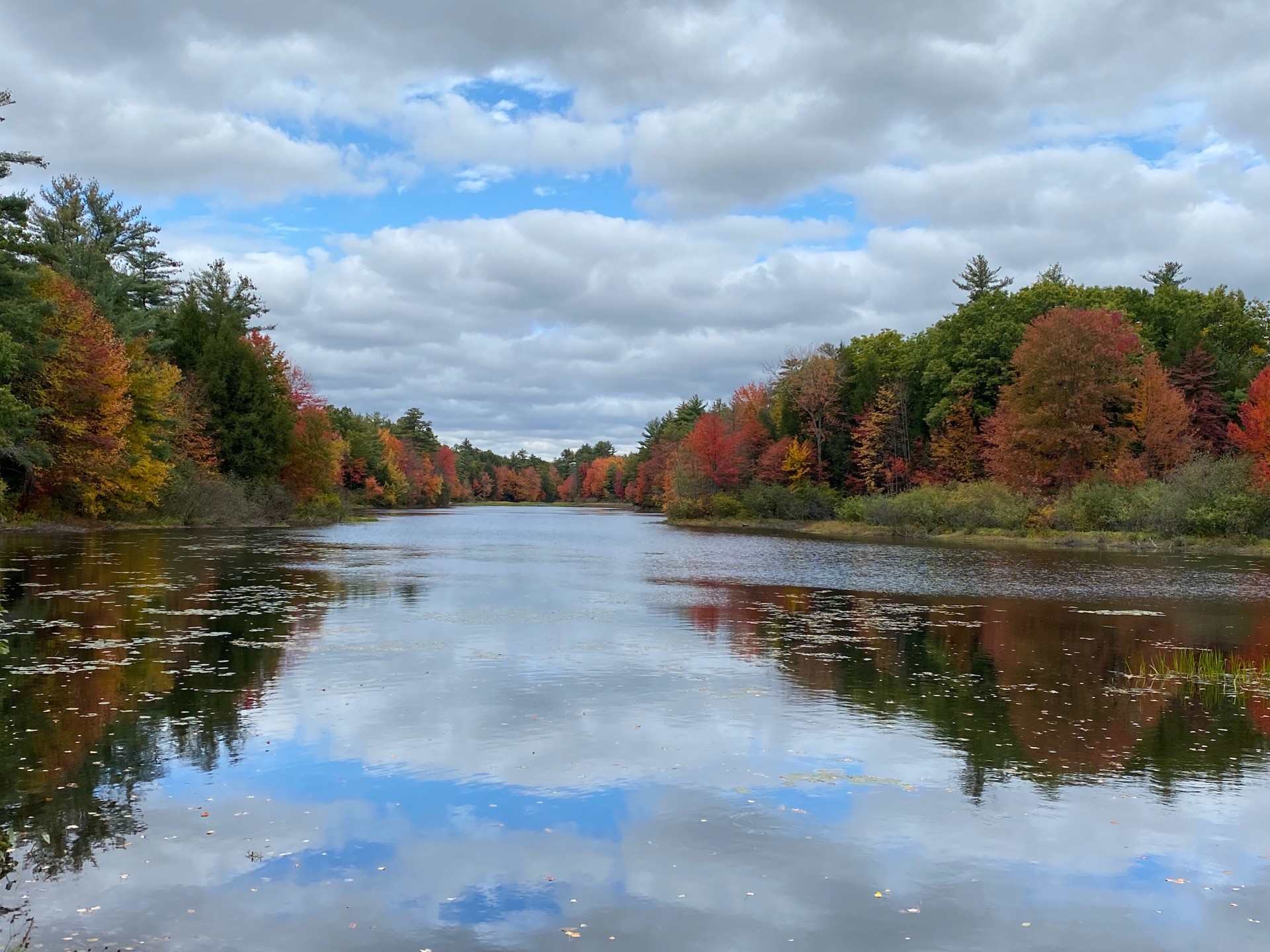Feature image by Nancy Murray.
Celebrating Local Action for Clean Water
Every community in our watershed has a role to play in protecting clean water, and this year, four are stepping up in big ways with support from our Piscataqua Region Environmental Planning Assessment (PREPA) Grants. PREPA Grants provide essential funding for water protection projects at no direct cost to towns or their residents, helping communities take proactive steps without adding to local budgets.
We’re thrilled to announce about $100,000 in total funding to support projects in four towns: Barrington, Fremont, Nottingham, and Strafford. No match required.
From septic ordinances to watershed plans and climate vulnerability assessments, these projects show that local action adds up to regional impact. Each of these towns is taking meaningful, proactive steps to safeguard drinking water, reduce pollution, and plan for a healthier future. With PREPA Grant support, they’re not only solving today’s challenges but also preparing for the ones ahead.
PREP's Piscataqua Region Environmental Planning Assessment Grant Program—also known as the PREPA Grant Program—supports any of the 52 cities and towns within the Piscataqua Region Watershed in both Maine and New Hampshire. The program helps our communities make big strides in protecting their natural resources and water quality, as well as in preparing for and adapting to recurring extreme weather events.
Learn about the Funded Projects
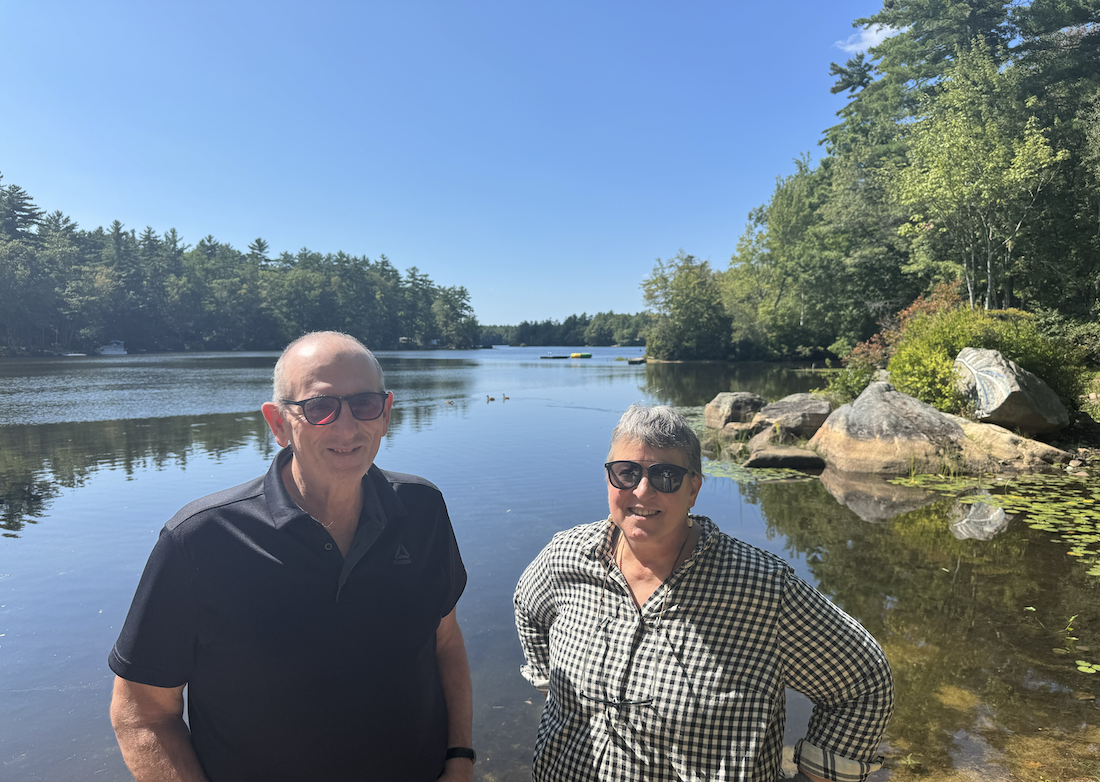
Image by PREP. Featuring Ernie Creveling of the Town of Barrington and Lisa Murphy of Stafford Regional Planning Commission as project leads.
Barrington
Septic systems that aren’t working properly can leak pollutants like bacteria and nutrients into groundwater, streams, and ponds. With support and leadership from the Strafford Regional Planning Commission, the town will draft a septic ordinance—proposed as a Health Ordinance—that will better protect residents and local waterbodies. At the same time, the town will review its stormwater rules. When rain or snowmelt hits the ground, roofs, roads, parking lots and other surfaces, it becomes stormwater which flows into our waterways, carrying pollution with it. Barrington is also launching an outreach campaign to reduce excess nitrogen and phosphorus from fertilizers near shorelines. These "nutrients" can fuel harmful algae growth if left unchecked.
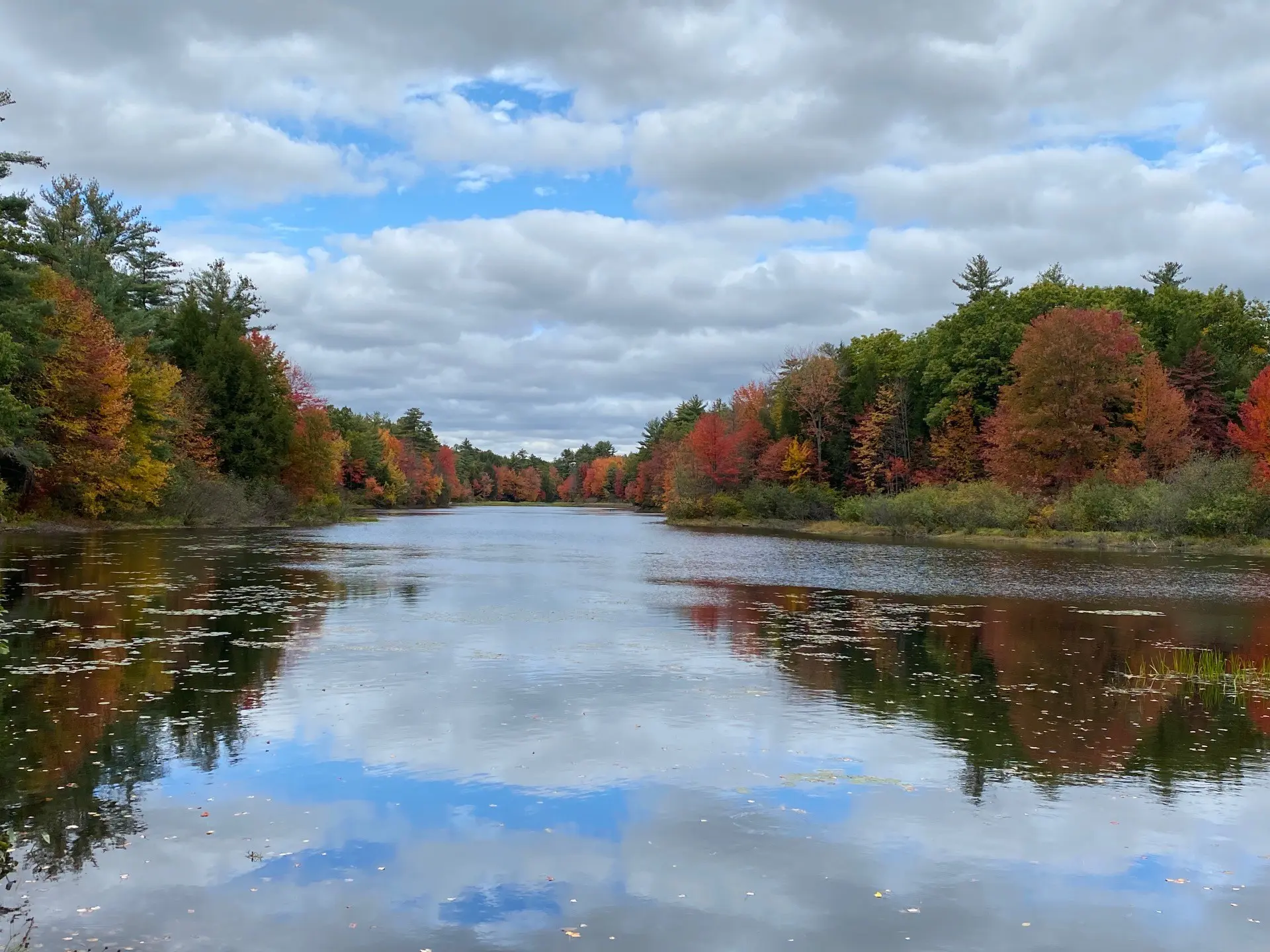
Image by Nancy Murray, Fremont Parks & Recreation Committee Member, featuring an autumnal view of the Exeter River in Fremont.
Fremont
Flooding, heat waves, and heavy storms aren’t just future problems—they’re already affecting New Hampshire communities. With support and leadership from the Rockingham Planning Commission, Fremont is responding by creating a Climate Vulnerability Assessment and Action Plan. This project will examine today’s and tomorrow’s hazards—like flooding, extreme weather, and rising temperatures—and outline strategies to strengthen community resilience and protecting drinking water supplies, As a result of this analysis, Fremont can develop practical strategies to tackle and prepare for future risks and make informed decisions to protect drinking water as well as its natural resources.

Image by Dallas Huggins and with permission from New Hampshire Turtle Rescue featuring the endangered Blanding's turtle in a Nottingham wetland.
Nottingham
A Natural Resources Inventory (NRI) is like a map of a community’s natural assets, including forests, wetlands, rivers, and wildlife habitat. With support and leadership from the Strafford Regional Planning Commission, the town update its Natural Resources Inventory (NRI) maps and Natural Resources (NR) Master Plan chapter. This work will align with the Town’s Housing Master Plan update, supported by a Housing Opportunity Planning (HOP) grant received in January 2025. By aligning these projects, Nottingham is making sure conservation priorities and future housing needs are considered side by side. The result will be smarter decisions about where to grow and where to protect, based on strong data, community input, and collaboration between local boards, like the town's Planning Board subcommittee and the Conservation Commission.
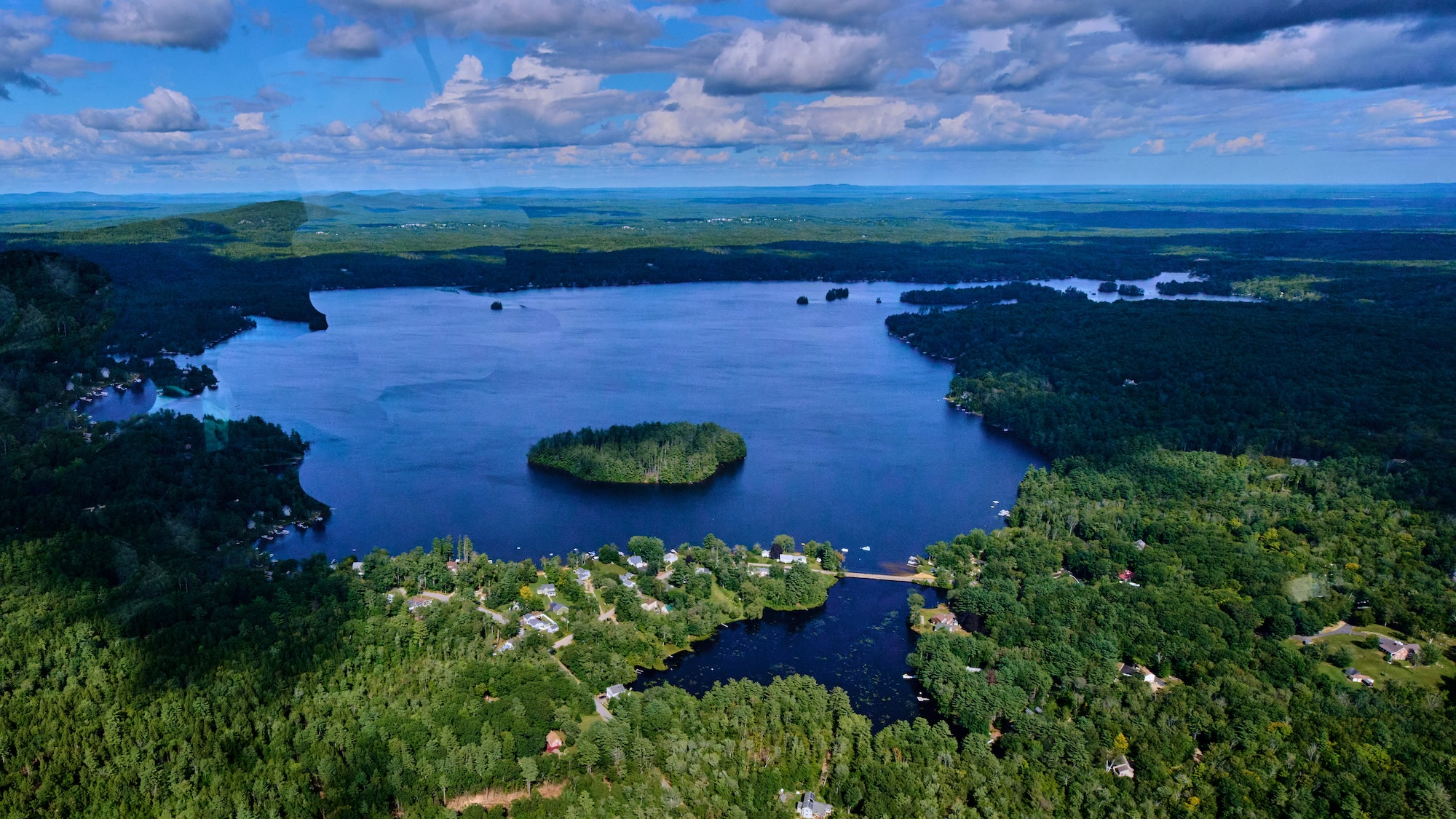
Photo by Robert Bennett featuring a stunning aerial view of Bow Lake on a summer day.
Strafford
Strafford is turning its attention to the Bow Lake Watershed, where clean water protections begins. Bow Lake is a headwater of the Lamprey River. With support and leadership from the Strafford Regional Planning Commission, the town will inventory local septic systems and study how road runoff (from stormwater) is affecting streams and lakes. By combining this with existing water quality data and stormwater studies, Strafford will develop a comprehensive watershed management plan. Just as importantly, the town will engage the public throughout the process, building shared responsibility for protecting clean water.
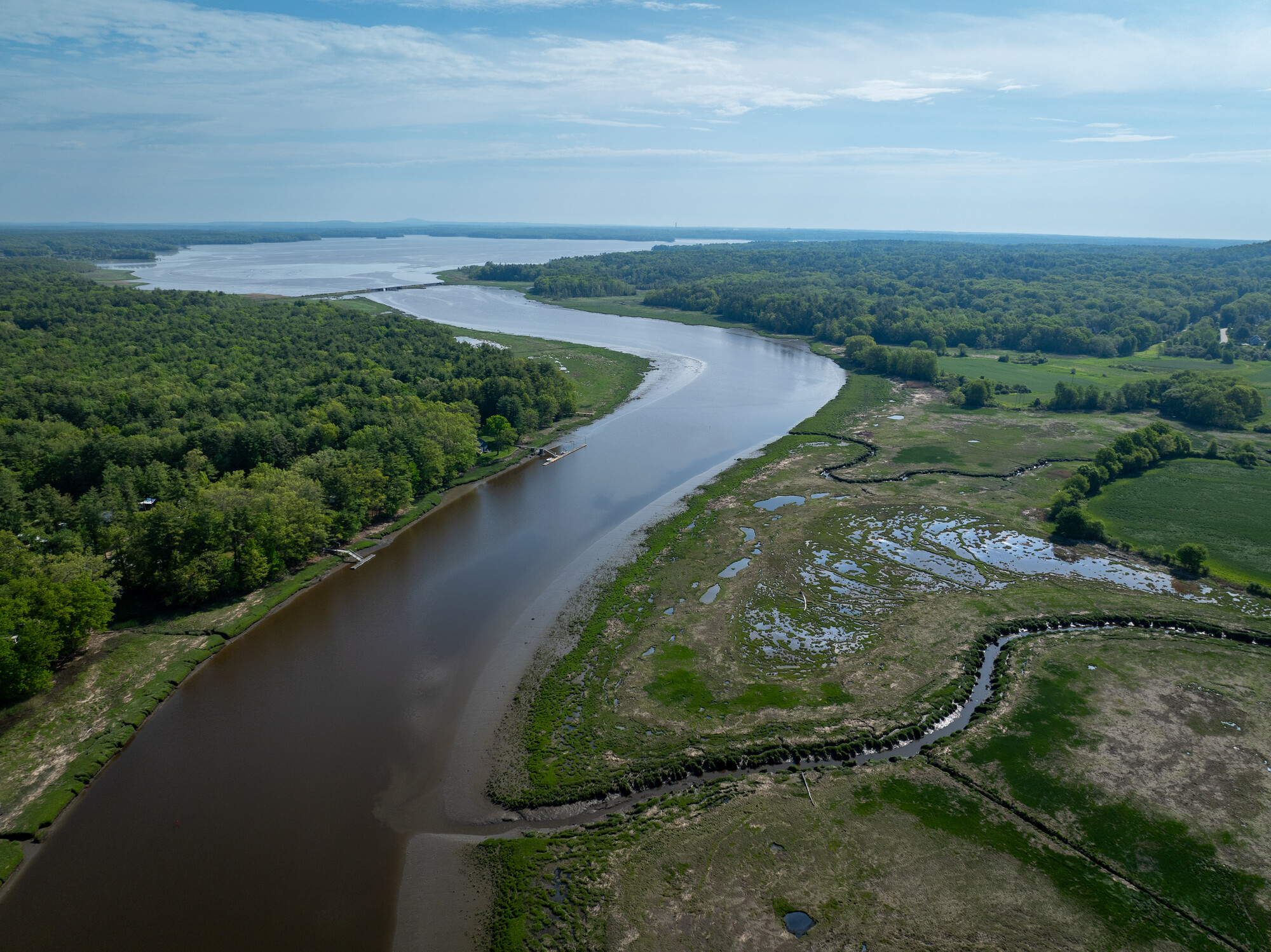
Photo by Scott Ripley.
These grants help towns take on proactive projects that improve local planning, protect health, and build resilience against today’s water challenges. We look forward to seeing each town experience direct local benefits by taking these initiatives
- Barrington residents could enjoy safer swimming and fishing thanks to reduced septic and fertilizer pollution.
- Fremont could recover more quickly when the next big storm or flood hits.
- Nottingham could make land use decisions that balance growth with conservation, ensuring forests and wetlands continue to filter water naturally.
- Strafford could keep Bow Lake cleaner for everyone in town and downstream.
And because all of these towns sit in the upper part of the Piscataqua Watershed, the ripple effects extend far beyond town lines: stronger local protections add up to a healthier watershed, benefiting communities, quality of life, wildlife, and economies across the region. Our waterways are deeply connected, even if there is distance between them. When all parts of our watershed thrive, so do we!
Want to Apply for a PREPA Grant?
The PREPA Grant Program will be announcing the next round of funding for 2026-2027 in the spring of 2026! Please sign up for our emails to learn about these opportunities and/or visit the PREPA Grants page on our website for more about the Program.

